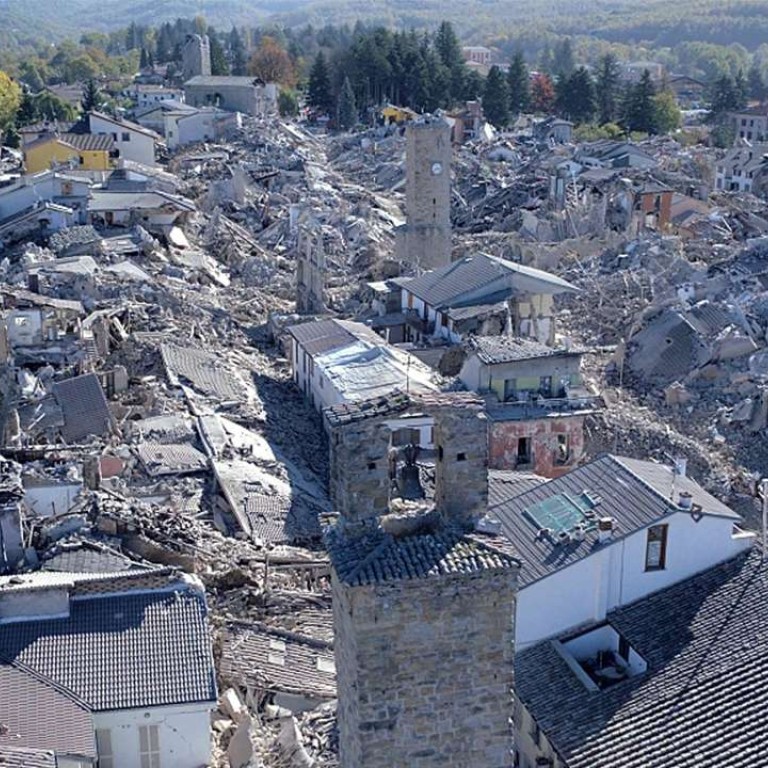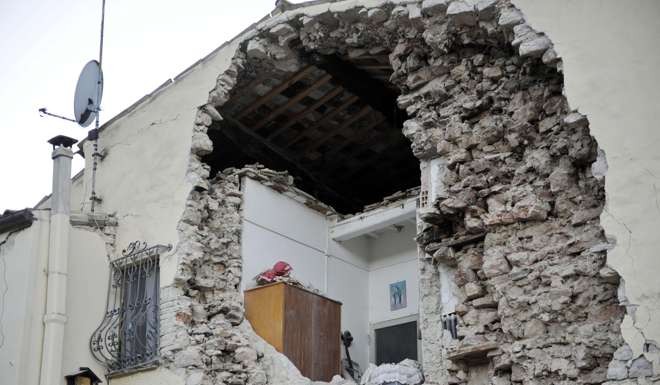
‘I saw hell break out’: centuries old buildings demolished as powerful quake strikes central Italy
A powerful earthquake with a preliminary magnitude of 6.6 has rocked central and southern Italy, sending already quake-damaged buildings crumbling after a week of temblors that have left thousands homeless.
Fabrizio Curcio, head of the national civil protection agency, said there did not appear to have been any fatalities after a tremor that was felt from Rome to Venice struck.
“We are checking, there are several people injured but for the moment we have had no reports of victims,” he told a press conference in the city of Rieti, in Lazio province.
Residents already rattled by a constant trembling of the earth rushed into piazzas and streets after being roused from bed by the 7.40am quake. Witnesses said the St. Benedict cathedral, the 14th century cathedral in one of the city’s main piazza, crumbled in the quake and only its facade remains standing.

The church is looked after by an international community of Benedictine monks based in a local monastery which attracts some 50,000 pilgrims every year. Visibly upset, some of the monks knelt in prayer before the ruins shortly after the quake struck.

The city’s ancient walls suffered damage, as did another famous local church, St. Mary Argentea, known for its 15th century frescoes.

“Everything collapsed. I can see columns of smoke, it’s a disaster, a disaster,” Marco Rinaldi, the mayor of Ussita, one of the pretty mountain villages hit hardest by the last quake, told journalists.

“I was sleeping in my car, I saw hell break out,” he was quoted as saying.
Another hard-hit city, Castelsantangelo sul Nera, also suffered new damage. In Arquata del Tronto, which had been devastated by the August 24 earthquake that killed nearly 300 people, Arquata Mayor Aleandro Petrucci said, “There are no towns left.”

“Everything came down,” he said.
The quake was felt throughout the Italian peninsula, with reports as far north as Bolzano and as far south as Bari. Residents rushed into the streets in Rome, where ancient palazzi shook, swayed and lurched for a prolonged spell.

The head of the civil protection authority in the March region, Cesare Spuri, said there have been reports of buildings collapsing in many cities.
“We are trying to understand if people are under the rubble,” Spuri said.
In Norcia, nuns knelt in prayer and a firefighter appealed to a priest to help maintain calm among dozens of residents gathered there, including some in wheel chairs.
The church, which had withstood the August earthquake in August and last week’s aftershocks, still was standing, but television pictures showed piles of stone had accumulated at the bottom of one wall. One stone was thrown meters into the centre of the piazza, illustrating the quake’s force.
“We have to keep people calm. Prayer can help. I don’t want people to go searching for family members,” the firefighter appealed as cameras from SKY TG24 filmed.


The German Research Centre for Geosciences put the magnitude at 6.5 and said it had a depth of 10km, a relatively shallow quake near the surface but in the norm for the quake-prone Apennine Mountain region.
On August 24, nearly 300 people died in a major quake in the notoriously seismic-prone region.
Additional reporting by Agence France-Presse

